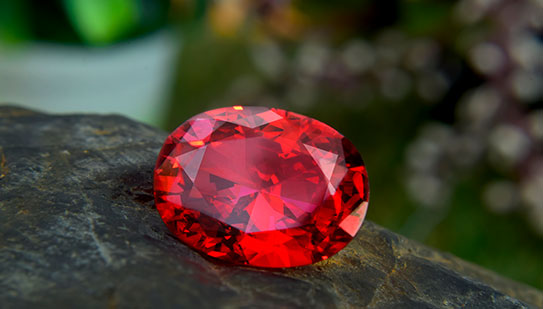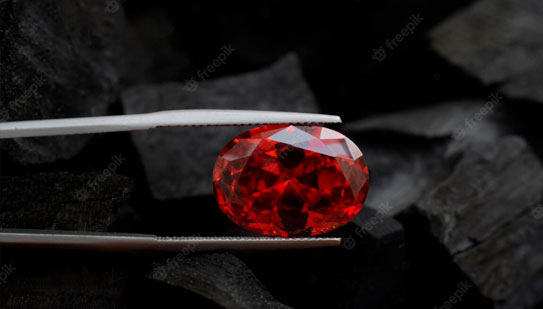If you have a taste for mesmerising Ruby, Cardinaq has all shades of red to offer. From Burma (Myanmar) and Thailand to Mozambique, we have all the varieties of Rubies for your luxury jewellery.

Origin
Ruby is a beautiful gemstone that comes from the mineral corundum and is coloured by trace amounts of chromium. At Cardinaq, we showcase rubies from Burma (Myanmar) and Thailand in their natural form. We present a broad selection of the world’s most luxurious rubies in their purest form and provide an experience that is unmatched.
Certification
A certification from a reputable source can ensure that your ruby is natural and untreated.
Purchasing a ruby is incredibly important, so buyers must have confidence in the source. GIA and GRS are badges that have come to be known internationally as symbols of quality assurance for ruby purchases. That is why, Cardinaq will offer you reliable grading reports GIA or GRS from the specialists upon request.

The ruby is a precious stone that many cultures throughout history have treasured. Ruby is a pink to blood-red coloured gemstone, a variety of the mineral corundum (aluminium oxide). It is considered one of the four precious stones, together with sapphire, emerald and diamond. Rubies can command very high prices, with some of the finest specimens fetching over US$1 million per carat.
The colour of ruby is caused by trace amounts of chromium. Ruby forms in metamorphic rocks that have been exposed to high temperatures and pressures. These conditions are found deep in the Earth’s crust, typically around igneous rock formations. When rubies are mined, they are extracted from kimberlite pipes or alluvial deposits.
The red colour of ruby is caused mainly by the presence of chromium. The finest rubies have a pure, vibrant red colour. The vast majority of rubies found in nature are what gemologists call “pigeon blood red,” and this vivid hue is extremely difficult to find in other types of stones. They are also known for their hardness; only diamonds are harder than rubies on the Mohs scale of mineral hardness. This combination of rarity and hardness makes ruby one of the most desirable and expensive gemstones.
There are four primary ways to cut a ruby gemstone: oval, round, pear, and cushion. The most popular cut is the oval, as it maximizes the stone’s carat weight. Round rubies are also quite popular, as they have a classic look that goes well with any setting. Pear-shaped rubies are less common, but they can add a unique touch to any piece of jewellery. Cushion-cut rubies are the least popular type of cut, as they tend to lose a lot of their carat weight during the cutting process.
The clarity of a ruby gemstone is determined by the number of inclusions present and their size, location, and relief. The fewer inclusions and the less noticeable they are, the higher the clarity grade. Included minerals or fractures that are close to the surface of the stone can interfere with light reflection and cause a loss of brilliance. Inclusions located near the centre of the stone may not be as visible but can still affect the clarity grade. Rubies with few inclusions and no blemishes are considered to be eye-clean. Those with more visible inclusions are still beautiful but may be discounted by some jewellers.
The gemstone ruby is said to be associated with the planet Mars and is known for its astrological value. The colour red is also said to be associated with this planet. It is believed that rubies can help balance the energies of Mars and bring courage, strength, and passion to those who wear them. It is known for its deep red colour and has been associated with love, passion, and power. The ruby is the birthstone for July and is the gemstone for the 40th anniversary.
Although ruby is a durable stone, it still needs special care to keep it looking its best. Store your ruby gemstone in a soft cloth pouch or jewellery box lined with soft fabric. Avoid exposing your ruby gemstone to harsh chemicals or cleaning solutions. Instead, clean it with warm soapy water and a soft brush. Avoid extreme heat or cold, as this can damage the stone. Remove your ruby gemstone before participating in activities that could put stress on the setting, such as sports or gardening.

